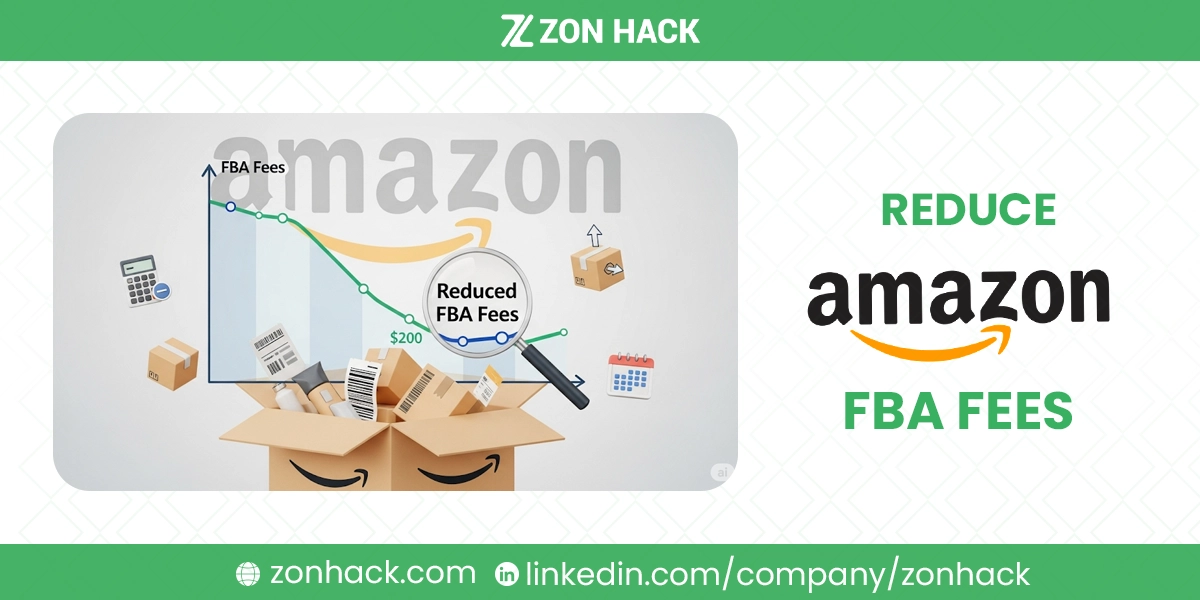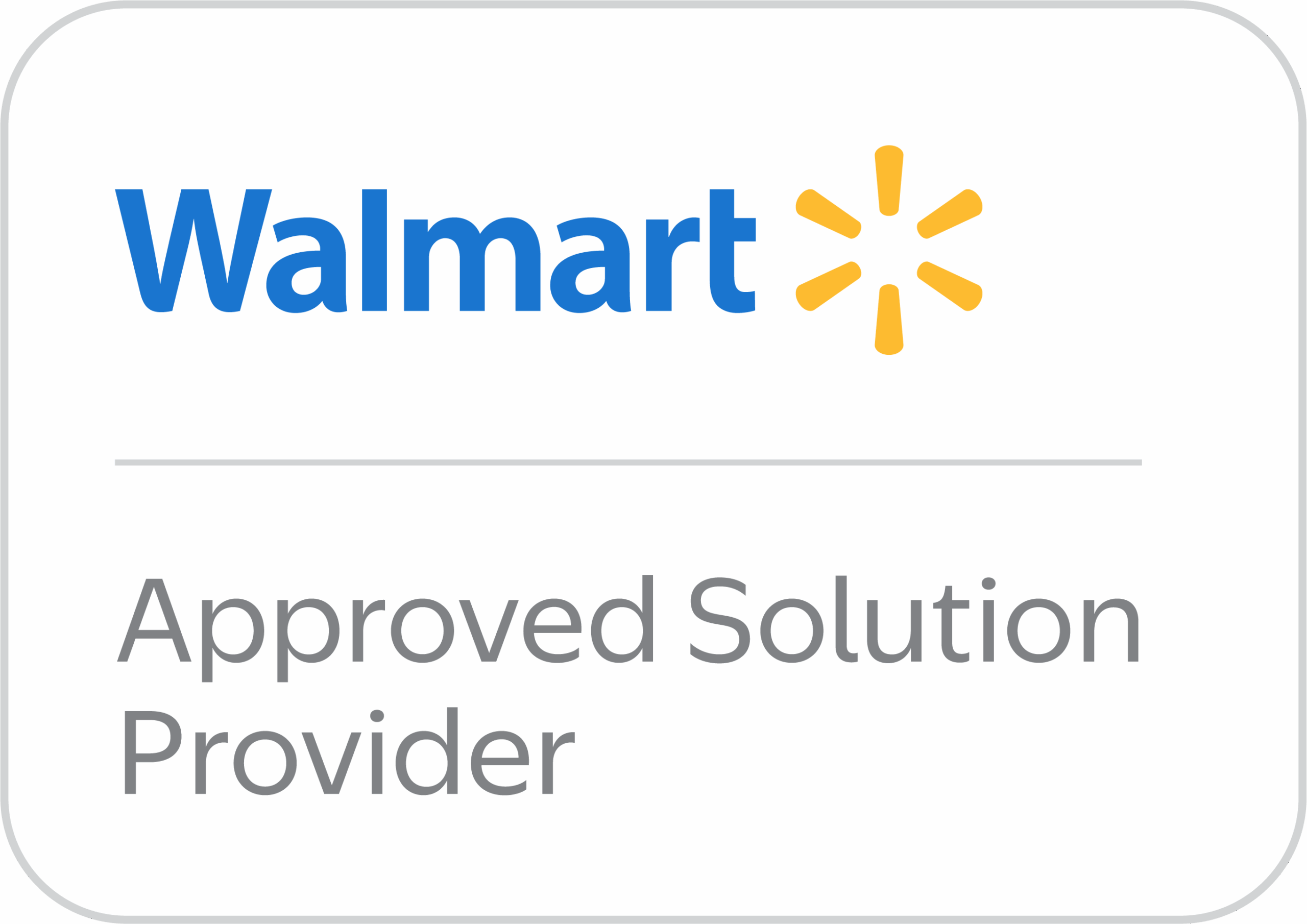Selling on Amazon FBA is exciting. You get access to millions of buyers, fast shipping, and Amazon handles most of the hard work for you. But here’s the catch—those FBA fees can eat up a huge chunk of your profits if you’re not careful.
The good news is, there are smart ways to keep those costs under control. By managing your packaging, inventory, and listings strategically, you can protect your margins and run a leaner business.
Types of Fees You Need to Pay for Amazon FBA
Before we can tackle the fees, we have to understand what they are. It’s like fighting a dragon—you need to know its weaknesses. Amazon’s fee structure can seem a bit overwhelming at first, but it’s really just a collection of different charges for different services. Once you break them down, they make a lot more sense. Let’s take a look at the main culprits.
FBA Fulfillment Costs
Think of these as the fees for Amazon’s hard work. This covers everything that happens once your product arrives at their warehouse. Amazon’s team picks your product off the shelf, packs it up in a box, and ships it to the customer. They also handle all the customer service for that order and process any returns. It’s a fantastic service that saves us a ton of time and effort. The cost is calculated based on the product’s size and weight. A small, light item costs much less to fulfill than a big, heavy one.
FBA Storage Costs
These fees are for renting space in Amazon’s giant warehouses. You pay a monthly fee for the amount of space your inventory takes up. Amazon charges you based on the cubic feet your products occupy. This fee can change throughout the year, with rates often jumping up during the busy holiday season. They also add extra fees for inventory that sits around for too long, which is their way of encouraging you to keep your products moving.
Other FBA Costs
Just when you think you’ve got it all figured out, Amazon throws in some more fees. These are the little extras that can add up quickly if you’re not paying attention. These can include fees for handling aged inventory—products that have been in their warehouse for over six months—and charges for processing customer returns. You might also see fees for removal orders if you decide to have your old stock sent back to you, or for disposing of it altogether. Oh, and let’s not forget the inbound placement service fee, which helps Amazon spread your inventory across their network.
Secret Formula to Reduce Amazon FBA Fees
Now for the good stuff. I’ve put together a few strategies that I personally use to keep my FBA fees in check. It’s a mix of a little bit of planning and a lot of smart execution. You don’t have to follow all of them, but even picking a few can make a huge difference in your bottom line.
Optimize Your Product Packaging
This is one of the most powerful tools in your arsenal. The smaller and lighter your product, the less you pay in fulfillment fees. It’s that simple.
Shrink Your Product’s Footprint: When you’re designing or sourcing a product, always think about its final package size. Even a fraction of an inch can be the difference between a “small standard” and a “large standard” size tier, and that can save you a bundle. Talk to your manufacturer about using more compact and efficient packaging. You’d be surprised how much wasted space is in a lot of product boxes.
Ditch the Extra Weight: Every ounce counts. Opt for lightweight but durable packaging materials. A lighter box with less filler material means a lower shipping weight, and that means a lower fulfillment fee. Your goal is to get your product to the customer safely, not to build a fortress around it.
The Cubiscan Audit: Amazon uses a machine called a “Cubiscan” to measure your products. Sometimes, these measurements are off, and you can end up being charged for a larger item than you actually have. I recommend regularly checking the dimensions Amazon has on file for your products. If you find a mistake, take photos of your product with a tape measure, and open a case with Seller Support to get it corrected. I’ve personally recouped hundreds of dollars this way!
Master Your Inventory Management
This is all about keeping your products flowing and not letting them collect dust in Amazon’s warehouses. The longer your inventory sits, the more you pay.
Ace Your IPI Score: Amazon’s Inventory Performance Index (IPI) score is a metric that tells you how well you’re managing your FBA inventory. A high score means you’re doing a good job. A low score can lead to higher fees and storage limits. Keep an eye on your IPI dashboard and take action on their recommendations.
Beware of Aged Inventory: This is a big one. Amazon will slap you with a heavy surcharge for inventory that has been in their fulfillment centers for over six months. To avoid this, keep a close watch on your inventory age. If a product isn’t selling as fast as you expected, it’s better to remove it or run a promotion to sell it off before those fees kick in.
Strike a Balance with Stock: Don’t send in too much product at once. It’s tempting to stock up to avoid a restock fee, but overstocking can be a costly mistake. Use your sales data and a good forecasting tool to predict demand. I aim to send in just enough inventory to last about 60 to 90 days. This keeps my storage fees low and my cash flow healthy.
Use Removal Orders Wisely: For products that just won’t sell, a removal order is a great option. Amazon will ship the products back to you for a small fee. Once you have them back, you can try to sell them on another platform, liquidate them, or simply dispose of them without the hefty aged inventory surcharges.
Strategic Product and Listing Decisions
Sometimes, the way you sell your product can be just as important as the product itself. A few strategic choices can lower your fees before an item even gets its first sale.
Bundle Up for Savings: If you sell a few related, low-cost items, try bundling them together as a single product. For instance, instead of selling three different colored pens individually, sell them as a “3-Pack of Pens.” You’ll pay one FBA fulfillment fee for the entire bundle, instead of a separate fee for each pen. It’s a simple trick that can dramatically increase your per-sale profit.
Explore Lower Referral Fee Categories: This is a bit of a longer-term strategy. Amazon charges a referral fee—a percentage of your sales price—that varies by product category. Some categories have lower referral fees than others. When you’re doing product research, consider this factor. A product in a 10% fee category will always be more profitable than an identical product in a 15% category.
Consider the FBA Low-Price Program: If you sell small, low-priced items, you might be able to qualify for this program. It’s designed for products priced under a certain threshold and offers significantly lower fulfillment fees. It replaced the old Small and Light program, and it’s a game-changer for sellers of items like phone cases, stickers, or small accessories.
Drive Outside Traffic for a Bonus: This is a newer but exciting opportunity. If you’re a brand-registered seller, you can drive traffic from your social media, blog, or paid ads to your Amazon listings. When a customer buys from you after clicking one of your external links, Amazon will give you a “Brand Referral Bonus.” This bonus comes in the form of a credit that effectively lowers your referral fee. It’s like Amazon is saying thank you for doing their marketing for them!
Utilizing Amazon’s Programs and Tools
Amazon actually provides some great resources to help you, you just have to know where to look. Using their tools can take a lot of the guesswork out of the fee equation.
The FBA Revenue Calculator: This is your best friend. Before you ever buy a product, use this free tool to estimate your costs and profitability. Simply enter the product’s details, and the calculator will show you a breakdown of all the fees you’ll pay and your potential profit margin. It’s an essential step in product research.
The Partnered Carrier Program: When you’re sending your inventory to Amazon’s fulfillment centers, you don’t have to go through a separate carrier. Amazon has negotiated discounted shipping rates with a network of carriers. By using their Partnered Carrier Program, you can save a significant amount on inbound shipping costs, making the entire process cheaper and easier.
Steer Clear of Unplanned Service Fees: Amazon has strict rules about how you prepare and label your shipments. If you don’t follow them, they will charge you for the extra work. Things like incorrect labels, mixed-up products, or poorly packaged items can lead to costly “unplanned service fees.” Always double-check your shipments before you send them out to avoid these surprise charges.
Conclusion
Reducing Amazon FBA fees isn’t about cutting corners—it’s about being smart. By optimizing packaging, keeping inventory in check, and using the right tools, you can lower costs without sacrificing sales. Every dollar saved on fees is a dollar added back to your profits.
Selling on Amazon is competitive, but managing fees well gives you a clear edge. If you’ve been struggling with shrinking margins, start by reviewing your current costs and applying these strategies one step at a time.




